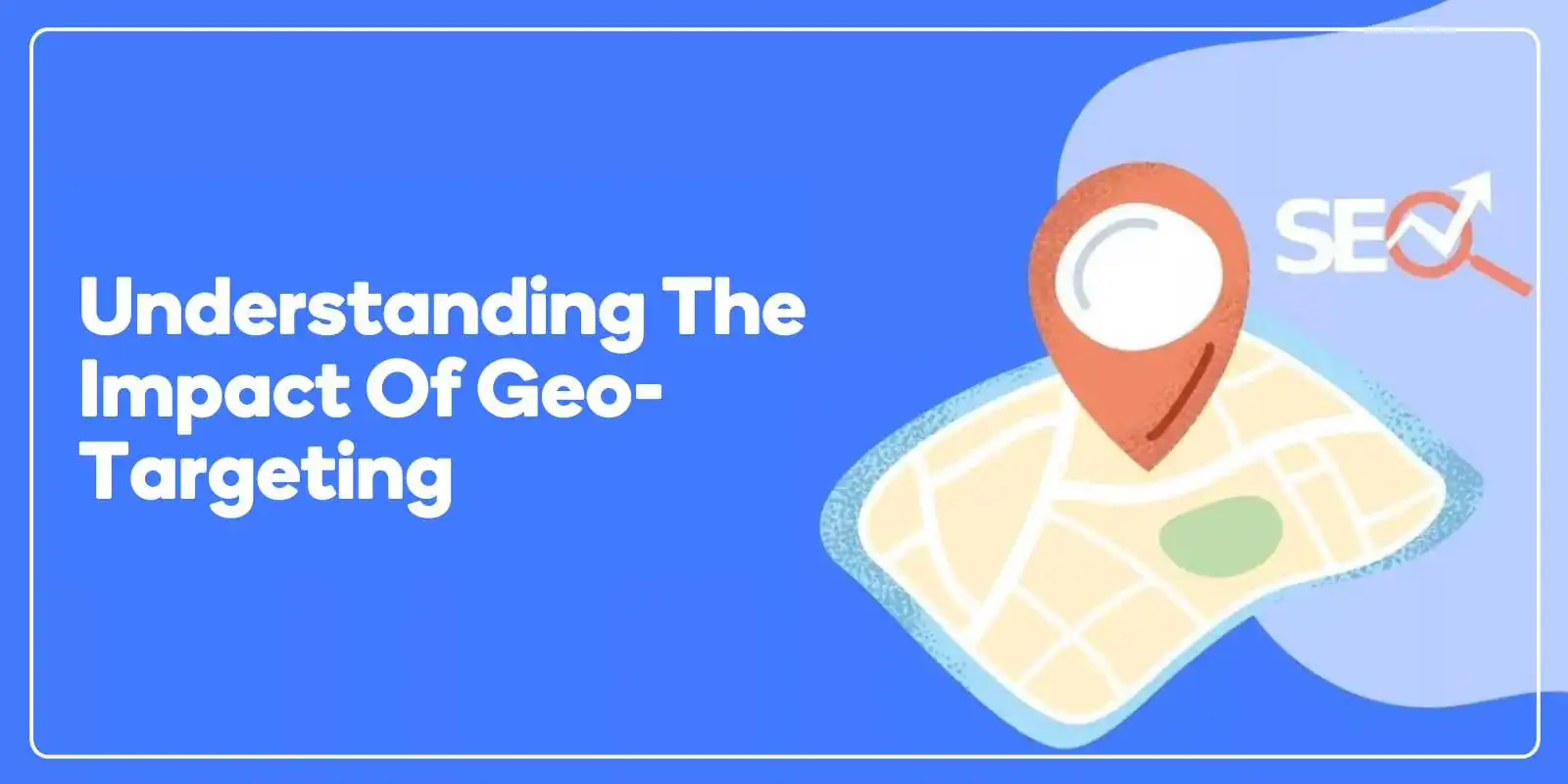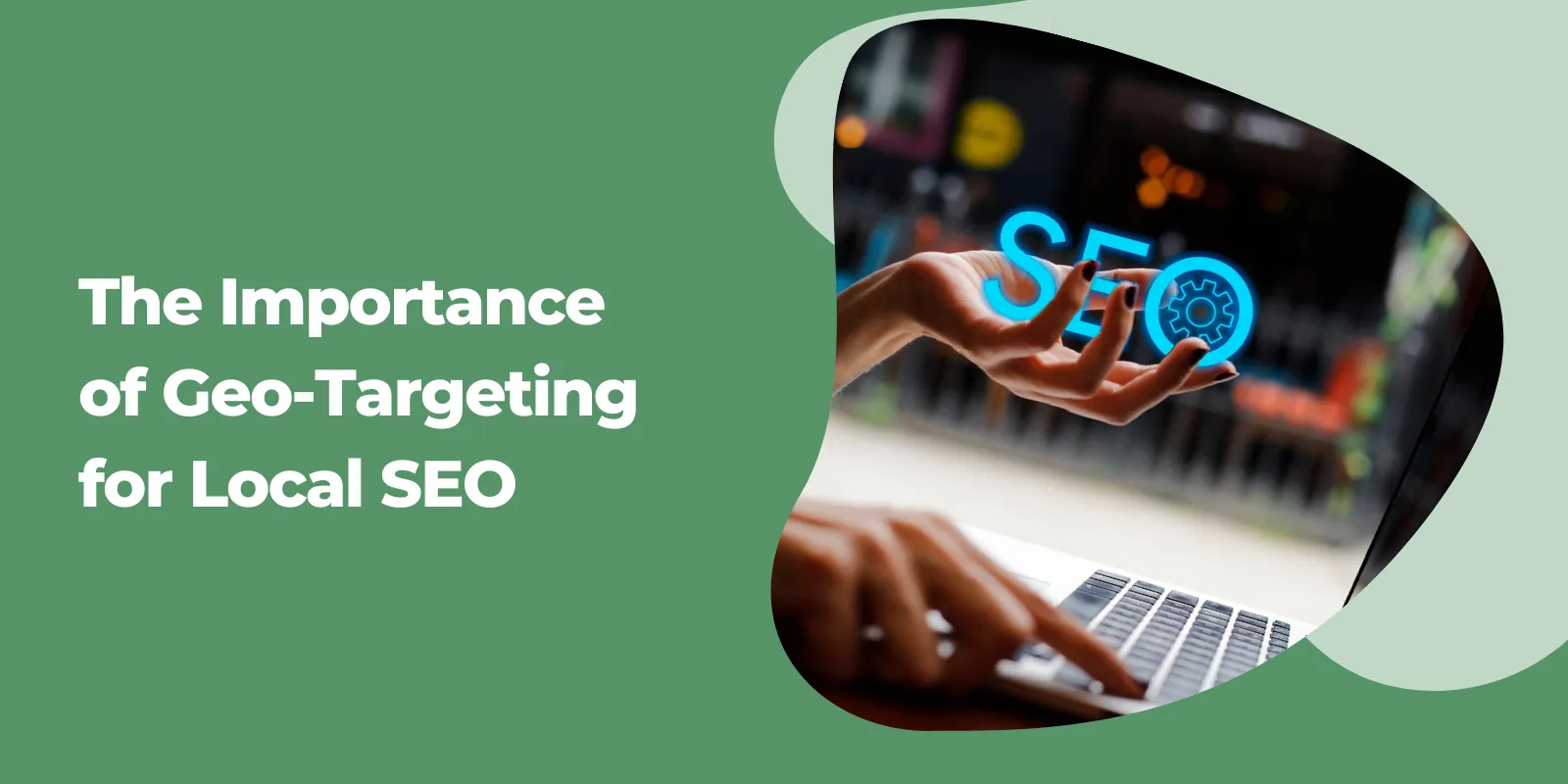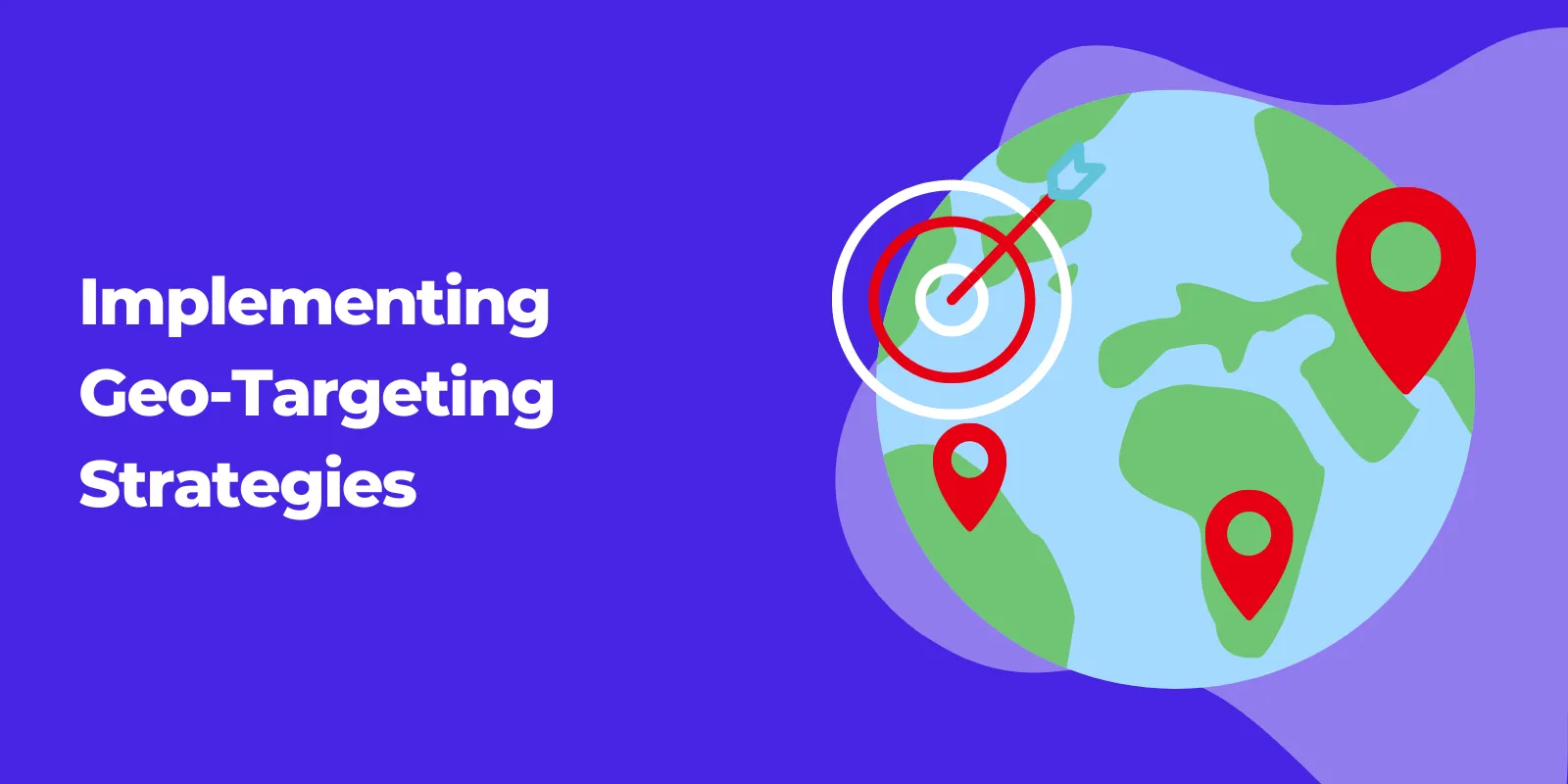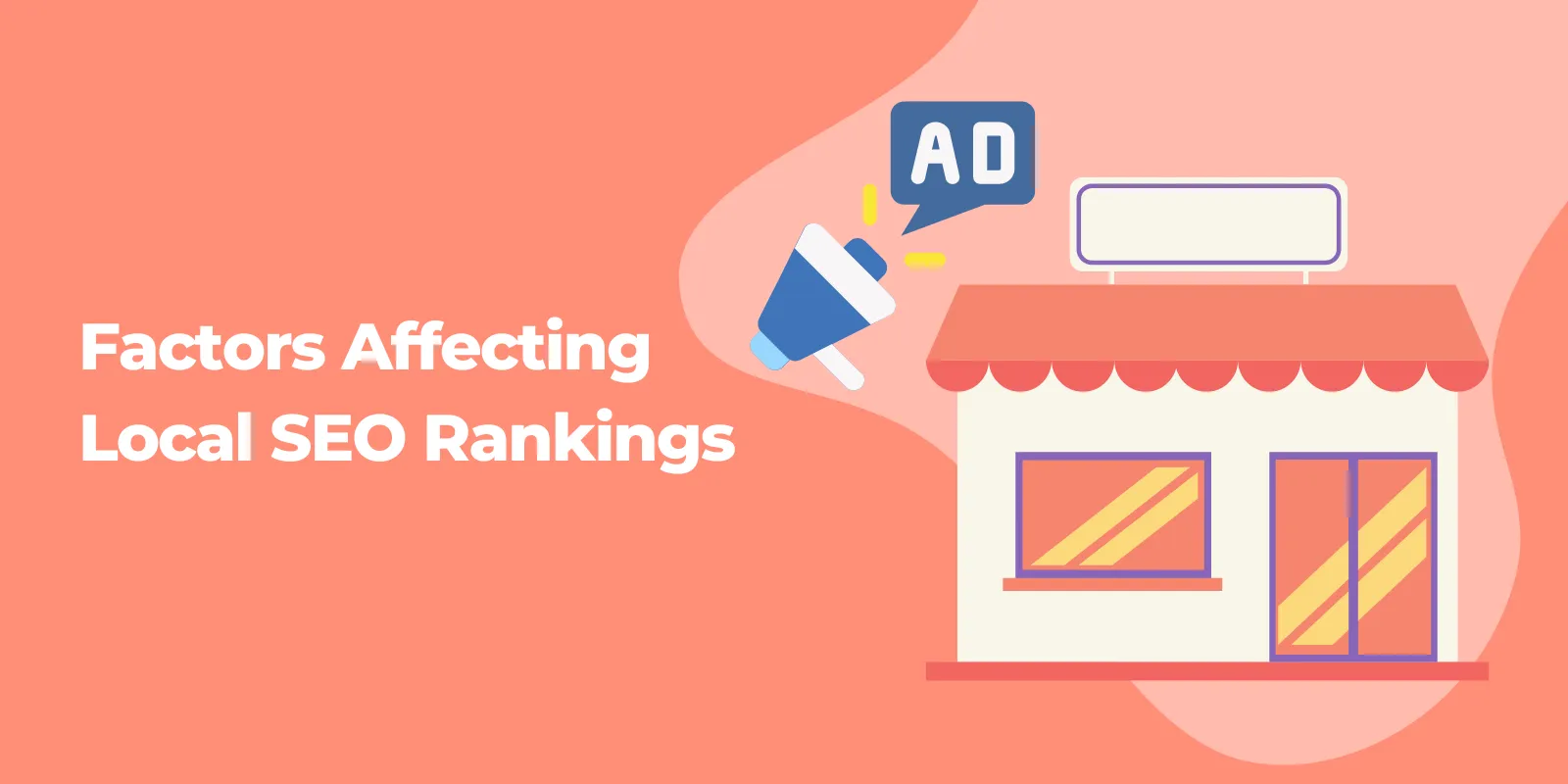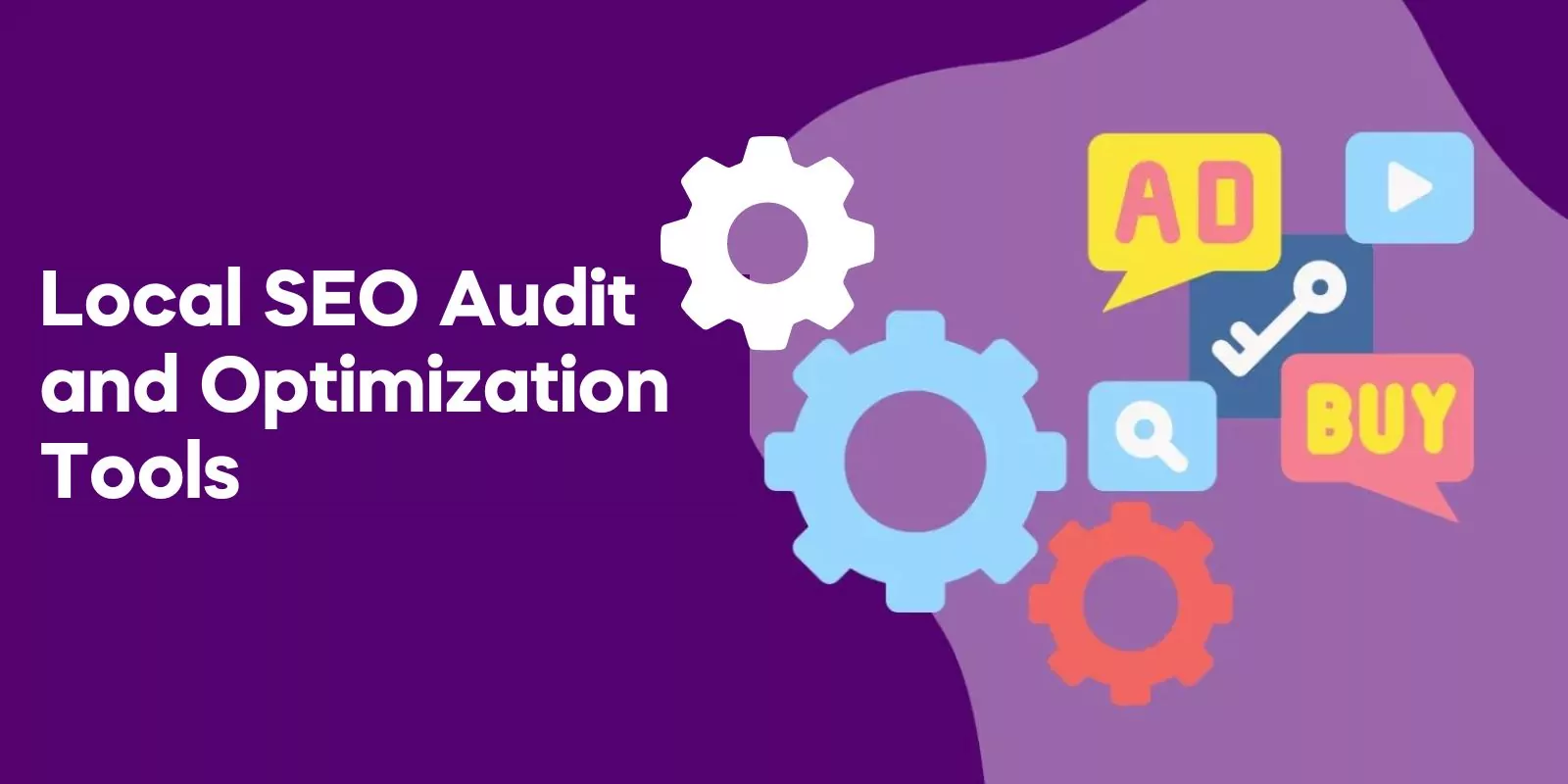With the rapid evolution of search engine algorithms and consumer behavior, businesses must adapt and leverage geo-targeting to improve their local search rankings and attract potential customers.
In this blog post, we’ll journey through the world of local SEO understanding the impact of geo-targeting, exploring its impact on local SEO, and discover how you can harness its potential to grow your business.
The Importance of Geo-Targeting for Local SEO
Geo-targeting is the process of using a user’s IP address, WIFI, or GPS data to identify their location and deliver content tailored to that specific area.
It’s a valuable tool that has become indispensable for optimizing local search engine rankings and drawing in potential customers.
By employing geo-targeting, businesses can ensure they appear in all the locations most relevant search results, resulting in higher conversions.
By having a local presence, both digitally and physically, businesses can appeal to local customers more effectively.
In today’s globalized world, where consumers have countless options at their fingertips, the importance of local SEO has never been more critical.
The Role of Location in Local SEO
Location information is the cornerstone of local SEO, as it helps optimize content, backlinks, and keywords to ensure greater visibility in local searches.
By incorporating location-specific keywords and information into your content, you can create a strong local media presence and connect with potential customers in your target area.
Mobile-friendliness is another crucial factor in local SEO, as Google primarily indexes the mobile version of a web page.
Top local SEO ranking factors include anchor text, inbound links, click-through rates, social, google search media, and reviews.
By understanding the role of location in local SEO, businesses can take advantage of various opportunities to reach their target audience in a more personalized way, ultimately driving more engagement and conversions.
Relevance of Google Business Listing Profiles
Google Business Profiles (formerly Google My Business orGMB) is a free and easy-to-use directory that appears directly in search results for local queries.
It serves as a highly important ranking factor, and optimizing your Google Business Profiles listing can ensure your company is featured in the Local 3-Pack. By maintaining accurate and up-to-date Google Business Profile listings, businesses can enhance local search results and increase their ranking.
One of the key elements of Google Business Profiles search engine optimization is ensuring a completed profile, as the local pack gives significant importance to it.
Managing reviews and questions from users and keeping your information up-to-date are essential steps in optimizing your Google Business Profile for local search results.
Ensuring accurate and current Google Business Profiles not only enhances the experience of customers in locating a business, but also helps build trust in online listings.
Implementing Geo-Targeting Strategies
To make the most of geo-targeting for local SEO, businesses should focus on creating location-specific content on web pages, establishing localized social media accounts, engaging with users from target areas, and submitting their business information to directories and review sites.
By doing so, businesses can effectively reach potential customers in their target geographic locations and boost their local search engine rankings.
There are various options for geo-targeting content, including coding and web services such as Google Optimize and Unbounce.
These tools can help businesses tailor their content to specific locations, ensuring that users receive the most relevant and engaging information for their area.
By leveraging these tools and strategies, businesses can enhance their local SEO efforts and drive more conversions.
Creating Location-Specific Content
Creating location-specific content involves tailoring your content to a particular location or region, featuring information about local events, landmarks, businesses, services offered, products, or brands sold, and other unique aspects of the area.
By optimizing content with relevant keywords and information specific to that location, businesses can increase their visibility in local searches.
Publishing blog posts and guides on regional topics could be beneficial for local customers. For example, “What to look for in a Chicago florist” could be useful to them.
By creating and optimizing location-specific content, businesses can better connect with their target audience and enhance their local SEO efforts.
Utilizing Online Directories and Citations
Online directories, such as Yelp, are essential for local SEO, as they serve as a key ranking factor and help boost business reputation and visibility.
Ensuring consistent contact details across local listings is paramount, as failing to do so can lead to a loss of potential customers before they have the opportunity to contact or visit your local business.
Citations, or online references to a business’s name, address, and phone number, can also help increase the visibility of local businesses in online search results and build trust in online listings.
By effectively utilizing online business directories and citations, businesses can optimize their local SEO efforts and attract more potential customers in their target regions.
Factors Affecting Local SEO Rankings
Several factors influence local search rankings on Google, and understanding these factors is essential for businesses to achieve desired rankings.
One of the most critical elements of local SEO is the quality of backlinks, which can significantly impact search rankings and visibility for local companies.
In this section, we will delve deeper into the factors that affect local SEO rankings, focusing on user experience and engagement, as well as proximity and location-based search intent.
By addressing these factors, businesses can improve their local search rankings and attract more potential customers to their websites.
User Experience and Engagement
User experience, click-through rates, and bounce rates can all have an influence on local search engine results pages and rankings.
A high bounce rate, which is the percentage of visitors leaving a website, indicates that the site is less relevant for users in that region and will consequently rank lower on search engines.
To improve user experience and engagement, businesses should optimize their content for local search, generating content tailored to a specific visitor’s location based, using online directories and citations, and leveraging geo-targeted tools and technologies.
These efforts can help businesses reduce bounce rates and enhance their local SEO rankings, ultimately driving more traffic and conversions.
Proximity and Location-Based Search Intent
Proximity and location-based search intent are critical components in local SEO rankings, as they help search engines determine the relevance of a business to a user’s search query and ensure that users are presented with the most pertinent results.
Optimizing content for local search and local intent is vital for businesses to rank higher in local search results and reach their target audience effectively.
By understanding the role of proximity and location-based search intent in local search rankings, businesses can tailor their content and marketing efforts to meet the needs and preferences of users in specific locations.

Award-Winning
Sales Funnel & Website Expert
Ready for Revenue – Not Just “Traffic”?
- Websites that Work: Clean, fast, built to convert – no design fluff.
- Funnels that Sell for You: Step-by-step paths that turn clicks into paying customers.
- SEO That Hunts Buyers: Show up exactly when prospects reach for their wallets.
This targeted approach can lead to increased visibility, customer satisfaction, and ultimately, higher conversion rates.
Leveraging Geo-Targeted Tools and Technologies
Various tools and technologies can help businesses enhance their local SEO efforts through geo-targeting.
These tools include geo-targeted static proxies, which enable businesses to access local search engines and target the right audience, as well as local SEO audit and optimization tools, such as Ahrefs, Moz, BrightLocal, and GrowthBar.
In this section, we will explore the benefits of using these tools and technologies, and how businesses can leverage them to improve their local SEO efforts and drive more conversions.
Geo-Targeted Static Proxies
Geo-targeted static proxies offer several benefits, such as gaining access to local search engines, boosting search engine visibility, and targeting the appropriate audience.
They can help businesses view search results from different geographic locations, enabling them to optimize their content and marketing efforts for specific regions.
When selecting a geo-targeted static proxy service, it’s essential to consider factors such as performance, reliability, and cost.
By choosing a high-performing and reliable proxy service, businesses can ensure that their geo-targeting efforts are effective and successful in driving more traffic and conversions.
Local SEO Audit and Optimization Tools
Local SEO audit and optimization tools, such as Ahrefs, Moz, BrightLocal, and GrowthBar, can assist businesses in tracking their local rankings, monitoring performance, optimizing content with relevant and local keywords, gaining insights into competitors and local prospects, and enhancing visibility in local search results.
By leveraging these tools, businesses can effectively optimize their websites and marketing efforts for local SEO and reach a wider audience in their target regions.
As a result, businesses can improve their local search rankings, drive more traffic, and increase conversions.
Case Studies and Success Stories
Now that we’ve explored the world of geo-targeting and its impact on local SEO, let’s look at some real-life examples of businesses that have successfully implemented geo-targeting strategies to drive conversions and enhance their local search rankings.
We’ll share success stories of local businesses thriving with geo-targeted content, as well as businesses that have utilized personalized geo-targeting to deliver tailored content to users in specific locations.
These case studies demonstrate the potential of geo-targeting for local SEO and serve as inspiration for businesses looking to improve their local search rankings and drive more conversions.
Local Businesses Thriving with Geo-Targeted Content
Geo-targeted content can significantly help local businesses connect with their target audience more effectively by offering personalized content to a specific location, enhancing user experience, amplifying ROI, and optimizing search engine rankings.
Examples of local businesses that have effectively generated and optimized location-specific content include those that have successfully drawn in more customers by tailoring content to their target regions.
These businesses have leveraged the power of geo-targeted content to reach their audience in multiple locations, improving their local SEO efforts and driving more traffic and conversions.
Boosting Conversions through Personalized Geo-Targeting
Personalized geo-targeting refers to the process of delivering customized content to a user based on their geographic location, frequently utilized in digital marketing to enhance engagement and relevance.
This approach can lead to greater conversions, customer satisfaction, and engagement, enabling businesses to focus on specific audiences and customize content to their requirements.
While specific examples of businesses employing personalized geo-targeting are not available in our knowledge base, it can be concluded that this approach is efficient for businesses looking to boost conversions, customer satisfaction, and engagement.
By leveraging geo-targeting, businesses can tailor their content and marketing efforts to their target audience’s needs and preferences, ultimately driving more traffic and conversions.
Frequently Asked Questions
What are examples of geo targeting marketing?
Geo-targeting marketing refers to the practice of delivering different content or advertisements to consumers based on their geographic locations. Here are a few examples:
- Location-Specific Email Marketing: A company could send promotional emails about a sale happening at their local branch to customers living in the vicinity.
- Localized PPC Ads: Advertisers can show different ads or change their messaging for different geographic markets on platforms like Google Ads.
- Social Media Geo-targeting: Platforms like Facebook allow businesses to show posts or ads to users based on their location.
- Website Personalization: Businesses can personalize their website content based on the visitor’s location.
- Local SEO: Businesses optimize their online presence to attract more business from relevant local searches.
How do I optimize local SEO for multiple locations?
To optimize local SEO for multiple locations, follow these steps:
- Create Separate Location Pages: Each location should have its own dedicated page complete with location-specific content, NAP (Name, Address, Phone number), and Google Maps integration.
- Use Schema Markup: Implement Local Business Schema markup on your location pages to provide search engines with more information.
- Optimize Your Google Business Profile Listings: Create separate listings for each location and ensure all information is accurate and consistent.
- Collect Reviews for Each Location: Encourage customers to leave reviews for the specific location they visited.
- Local Link Building: Obtain backlinks from local businesses, organizations, and directories relevant to each location.
How to do SEO for local listing?
- Complete Your Google Business Profile: Fill out every section of your Google Business Profile, and keep the information up to date.
- Use Local Keywords: Include local keywords in your website and Google Business Profile.
- Maintain Consistent NAP: Your name, address, and phone number (NAP) should be consistent across all your online listings.
- Collect and Respond to Reviews: Encourage happy customers to leave reviews and respond promptly to any reviews you receive.
- Optimize for Mobile: Ensure your website is mobile-friendly, as many local searches happen on mobile devices.
What is the best local SEO factor?
The Google Business Profile listing is currently the most crucial factor for local SEO. Ensuring your business has a fully optimized Google Business Profile listing with accurate information, lots of positive customer reviews, and relevant images can significantly improve your local search rankings.
What are the three ranking factors for local SEO?
According to Google, the three main factors that affect local SEO are:
- Relevance: How well a local listing matches what someone is searching for. Adding detailed business information can help Google better understand your business and match your listing to relevant searches.
- Distance: How far each potential search result is from the location term used in a search. If a user doesn’t specify a location in their search, Google will calculate distance based on what’s known about their location.
- Prominence: How well-known a business is. Some places are more prominent in the offline world, and Google tries to reflect this in local ranking.
What are local ranking factors?
In addition to Relevance, Distance, and Prominence, other local ranking factors include:
- Google Business Profile Listing: A well-optimized and regularly updated GMB listing is crucial.
- Online Reviews: The quantity, quality, and recency of reviews on your Google Business Profile listing and other review sites.
- Local Citations: The presence of your business information (Name, Address, Phone number) on directory websites.
- On-Page SEO: The use of local keywords on your website, including your meta tags, headers, and content.
- Backlinks: The quality and quantity of links pointing to your website.
How do I rank higher locally?
To rank higher locally, focus on:
- Optimizing Your Google Business Profile Listing: This includes posting regular updates, responding to reviews, and keeping your information up to date.
- Building Local Citations: Make sure your business is listed in reputable online directories and that your information is consistent.
- Collecting Online Reviews: Encourage happy customers to leave a review on your Google Business Profile listing.
- Optimizing Your Website for Local Search: This includes adding your city and state to your meta tags, headers, and content, and having a dedicated contact page for each of your locations.
What are the three types of ranking?
In SEO, there are primarily three types of rankings to consider:
- Organic Rankings: These are the rankings of your website’s pages in the search engine results pages (SERPs) for certain keywords. They are influenced by numerous factors including content quality, backlink profile, website structure, mobile-friendliness, and many more.
- Local Rankings: These are influenced by location-based factors such as proximity, Google Business Profile listings, local citations, and reviews. Local rankings are most relevant for businesses with physical locations or businesses that serve specific geographic areas.
- Image Rankings: These are the rankings of your images in image search results. Image SEO involves factors such as the file name, alt text, title, caption, and surrounding text content.
Conclusion
In conclusion, geo-targeting is an indispensable tool for local SEO, enabling businesses to reach their target audience more effectively and improve their local search rankings.
By understanding the importance of location in local SEO, leveraging geo-targeted tools and technologies, and implementing strategies such as location-specific content creation and online directories, businesses can harness the power of geo-targeting to drive more conversions and enhance their online presence.
The success stories and case studies shared in this blog post serve as inspiration for businesses to embrace the potential of geo-targeting, ultimately leading to greater customer satisfaction, engagement, and ROI.
